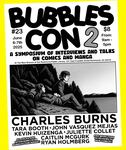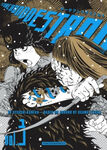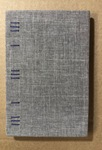
Abrams; 1992; 144 pages
paperback
The Amazing Continuity provides an engaging introduction to the life and works of Stuart Davis, but it will be more truly valued by those already familiar with his work who would like to increase their appreciation of it, for it is in the material presented here -- in Davis’s drawings, sketchbooks, and notebooks -- that we get the most intimate look at the mind of the artist. Published in conjunction with the exhibition of the same name organized by the American Federation of Arts that toured the US from 1992 through 1994, The Drawings of Stuart Davis covers the entire length of Davis’s career: from 1909 pencil sketches of industry amidst domesticity through to his casein on paper roughs of the early 1960s. As with any overview of Davis, you can’t help but get caught up in watching his development unfold. The transitional developments are especially apparent in some of the drawings and studies for his paintings that are contained in this volume.
Stuart Davis is one the great geniuses of 20th Century American art. His career is unique in that it encompassed many of the the schools and movements that shaped American art during the century and produced works that in some cases, as the reproductions in this book show, actually managed to span the divides between them. Davis began his art career under the tutelage of John Sloan with a socialist realism geared for the leftist periodical, The Masses before shifting gears, gradually at first but then full throttle, into a cubism-based but avowedly all-American abstraction, which further developed to incorporate signage and other commercial motifs in a way that clearly prefigured the iconography of Pop. Throughout it all Davis linked his work to that most American of art forms, jazz. Davis identified the soul of America in the balanced integration of composition and improvisation that is jazz's essential quality, and it is this same quality that informed his work. And in his lifetime struggle to successfully merge text and image in a single work of art, Davis discovered an artistic continent that has yet to be thoroughly explored or completely mapped.
The ninety-one plates--in color and B & W as called for (click here for examples)-- that reproduce the exhibition are introduced by two essays, "Stuart Davis and Drawing" by Karen Wilken and "The Language of Stuart Davis: Writing/Drawing" by Lewis Kachur, which provide ample insight into the mind and the motives of the artist. In addition, two pages of excerpts from Davis's writings are appended at the conclusion that really go straight to the heart of the matter and include such epiphanies as:
"Art is never information-- it is a direct event and experience.""All Art is negation of nature."
"A line must always be thought of as a place where something is going on."
Anyone who would like to learn more about modern American art and its relationship to drawing will certainly get their money's worth and then some with this book. And, to be perfectly honest, even if you aren't all that interested in the historical significance or intellectual underpinnings of Davis's art, you can still have a really good time just looking at the pictures, because after all is said and done, that's the main thing with Stuart Davis.










